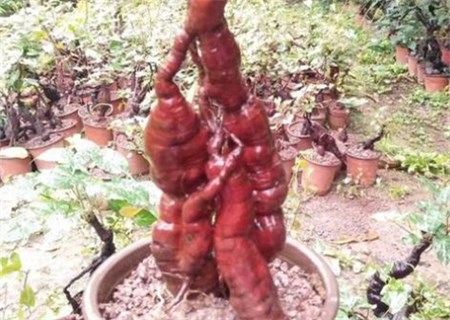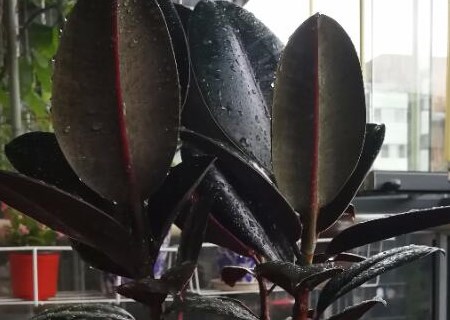The culture methods and matters needing attention of the hundred vein root of Rosa suborder? How to sow seeds? What are the values?
Baimai Root (scientific name: LotuscorniculatusLinn.) Root of Rosaceae, so what are the culture methods and matters needing attention? How to sow seeds? What are the values? It is understood that Baimaigen originated in the temperate zone of Europe and Asia and is now widely used as a forage in China. It is widely distributed in southwest China, and is also a good plant for soil and water conservation.

First, the breeding methods and matters needing attention of Baimai root?
Light and temperature
The hundred pulse root likes the suitable light, is not tolerant to the shade, likes the warm climate, does not bear the cold. Breeding hundred pulse root, need to give long sunshine, sunshine time is enough, can better blossom. If the sunshine time is short, it will reduce flowering and creeping growth. The suitable temperature for root growth is between 18 ℃ and 25 ℃, and the temperature for flowering is between 21 ℃ and 27 ℃. Baimai root is not cold-resistant, and it is easy to suffer frost damage if the temperature is too low in winter. If the temperature is less than-3 ℃, it will make the root, stem and leaf withered and yellow. Have a certain ability of heat resistance.
Watering and fertilizing
Baimai root likes to be moist, after planting, we should pay attention to give the plant sufficient water to meet its growth needs, and reasonable fertilization. In fact, the demand for more fertilizer is relatively large, in planting, you need to apply sufficient base fertilizer, organic fertilizer or some phosphate fertilizer can be used, before fertilization will be sprinkled with water accumulation, fermentation is better, the application of rotten fertilizer water.
Soil
Baimai Root likes fertile and irrigated soil, clay, sandy soil, acidic soil, slightly alkaline soil, are the choice of soil, Baimai Root can tolerate thin barren, can also grow in thin barren soil. But the soil had better be deep, fertile and well-drained sandy soil.
Note:
Diseases and insect pests
In the process of growth, there are often various diseases and insect pests, such as gray mold, Sclerotinia sclerotiorum, white silk disease, powdery mildew, rust, black spot and so on. the pests are mainly red spiders, aphids, grubs, shell insects, alfalfa night moths, whitefly and so on.
Reproduction method
The propagation of Baimai root is mainly sowing and propagation, and it can also be cut, and the reproduction is relatively simple.
Second, how to sow seeds?
1. Seed treatment
Because its seeds are covered by a hard shell, the hard shell should be disposed of before sowing, otherwise it will affect germination. It can be mechanically assisted to remove the shell, but it is easy to hurt the internal seeds; it can also be soaked in warm water, but it takes a long time, about 24 hours later, take it out of the water, dry it, and then dry it after rinsing with clean water before sowing.
2. The method of sowing
Sow the treated seeds in the soil and cover a layer of soil about 1 cm to 2 cm thick. The best distance between the seeds and the seeds is about 30 cm.
3. Time of sowing
If sowing in spring, try to do it in early spring; if sowing in autumn, it must be done by the end of August.
4. Management after sowing
After sowing, the soil should be kept slightly moist, and the environment should not be too dry. Fog water can be sprayed around plants from time to time.
When there are small buds, always pay attention to remove weeds, and irregularly loosen the soil, because the growth rate of small buds is very slow, this can ensure the growth of small buds more robust.
If the temperature is below minus 3 degrees in early spring or autumn, keep out the cold in time, otherwise it is very easy to frostbite small seedlings, the cold tolerance of small seedlings is very weak. Its best growth temperature is between 18 and 25 degrees.
Third, what is the value?
1. The feeding value of Rhizoma Polygoni
Baimai root has the advantages of high grass yield, long life span, large seed reproduction coefficient, strong adaptability and rich nutrition, which ranks first in legume forage. The stem and leaf have strong ability to preserve nutrients, less nutrient loss after harvest, and the quality is still excellent; the root, stem and leaf are tender and succulent, taste good, suitable for all kinds of livestock to eat; in addition, the diosgenin content is less, the grazing tolerance is strong, and the symptoms of flatulence will not occur after eating.
2. The medicinal value of Rhizoma Polygoni
Rabdosia mandshurica is a sweet, bitter and cold Chinese herbal medicine, mainly the root as a medicinal material. On the one hand, Baimai Root is a kind of tonifying drugs for tonifying deficiency and clearing heat, which can quench thirst; on the other hand, Baimai Root has the effect of clearing heat and detoxification, which can treat cough and pharyngitis; finally, Baimai Root can be used externally to treat eczema.
3. The effect of Baimai Root on soil improvement.
There are many nodules on the root system, which has a good effect of nitrogen fixation, which can increase soil organic matter, improve soil structure and enhance soil fertility. It can be rotated with oil crops or cash crops to ensure good soil structure and nutrient supply.
4. The effect of Baimaigen on soil and water conservation.
Baimaigen is a good soil conservation plant because of its tolerance to barren soil, developed root system, creeping growth of stems and branches, strong grip, wide coverage and strong ability of soil consolidation and erosion prevention.
Time: 2019-03-16 Click:
- Prev

What are the methods of bonsai culture of Polygonum multiflorum? What can't you eat with? What are the ways to make wine?
Many friends only know that Polygonum multiflorum can be used as medicine, but many people do not know that Polygonum multiflorum can be watched. Polygonum multiflorum not only can be made into bonsai for people to watch, do you know what are the methods of bonsai culture? What can't you eat with? What are the ways to make wine?
- Next

How to raise mulberry black King Kong rubber tree? Is it poisonous? Does it purify the air?
Although the black King Kong rubber tree likes the sun but can bear the shade, it has a strong adaptability to light, so it is very suitable for indoor beautification and layout, and is often used to beautify the living room and study. So do you know how to raise black King Kong rubber trees? Is it poisonous? Does it purify the air? Black King Kong rubber tree how to raise, 1. Potted soil: rubber tree taboo clay
Related
- Fuxing push coffee new agricultural production and marketing class: lack of small-scale processing plants
- Jujube rice field leisure farm deep ploughing Yilan for five years to create a space for organic food and play
- Nongyu Farm-A trial of organic papaya for brave women with advanced technology
- Four points for attention in the prevention and control of diseases and insect pests of edible fungi
- How to add nutrient solution to Edible Fungi
- Is there any good way to control edible fungus mites?
- Open Inoculation Technology of Edible Fungi
- Is there any clever way to use fertilizer for edible fungus in winter?
- What agents are used to kill the pathogens of edible fungi in the mushroom shed?
- Rapid drying of Edible Fungi

